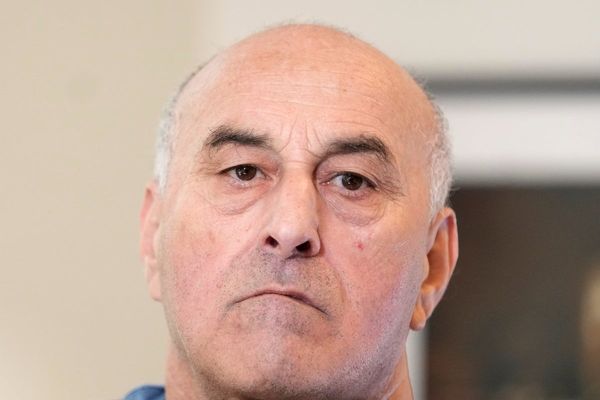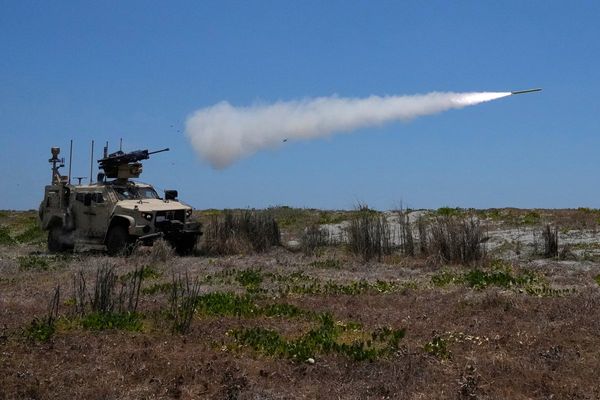“The Jewish state would form a part of a wall of defence for Europe in Asia, an outpost of civilisation against barbarism,” Theodor Herzl, one of the founders of modern political Zionism, wrote in Der Judenstaat (The Jewish State), a pamphlet published in 1896. In the pamphlet, he argued that security for Jews could be guaranteed only by the creation of a separate national state for them, and requested the Ottoman Sultan to give Palestine to the Jews. He promised, in return, to undertake the regulations of the whole of Turkey’s finances. The movement Herzl began culminated in the creation of the state of Israel in historical Palestine in 1948. More than 75 years later, the civilisational outpost Herzl had imagined, which continues its illegal occupation of Palestinian territories, is fighting a calamitous war on the Gaza Strip.
In just 10 weeks, Israel, which Prime Minister Benjamin Netanyahu calls the “people of light”, has killed 20,000 Palestinians, a vast majority of them women and children, wounded over 50,000 and displaced almost 90% of the enclave’s population. While Israel has managed to turn Gaza into what the United Nations called a “graveyard for children and a living hell for everyone else”, it also faces questions on whether it is meeting its objectives after two and a half months of bombing and invasion.
Israel’s objectives
Israel had two declared objectives when it launched the attack on Gaza, which followed Hamas’s October 7 cross-border raid in which at least 1,200 Israelis were killed, most of them civilians. One was to free the hostages — Hamas had taken some 240 hostages during its raid. And the other, as repeatedly claimed by Mr. Netanyahu and his Ministers, was to “dismantle” Hamas. A third, undeclared, but self-evident, objective was to rebuild Israel’s deterrence so that another October 7 would not happen.
On paper these were achievable goals. In terms of military capabilities, Hamas does not stand even for a distant comparison with Israel, West Asia’s most powerful country. A nuclear power and a developed economy, which is politically and militarily backed by the United States, Israel, equipped with some of the world’s most advanced offensive and defensive weapons, had taken quick victories in the past against its conventional rivals. Israel also controls all of Gaza’s border except the Rafah crossing in the south into Egypt. Hamas, on the other side, has roughly 50,000 fighters with assault rifles and short- to medium-range rockets. Unsurprisingly, Israel has showered fire and fury on Gaza. But is it close to dismantling Hamas?
Before the war began, Israel had said Hamas leaders in Gaza, especially Yahya Sinwar and Mohamed Deif, were dead men walking. Apparently, they are still walking. So far, Israel has managed to free only one hostage through its military operation (it shot dead three hostages by mistake). The over 100 hostages who were released were part of a brief ceasefire deal that Israel had struck with Hamas. When Israel launched its ground invasion, its initial thrust was into northern Gaza, which pushed over one million people towards the south. The Israel Defense Forces (IDF) claimed that the Al Shifa hospital, Gaza’s largest medical facility, in the north, had hosted a top Hamas command centre in underground bunkers. The IDF stormed the hospital in November despite a global uproar, but is yet to show any evidence that Hamas’s top command was based in the hospital.
Asymmetric wars
While Israel has an excellent track record against its conventional rivals in the region, its record against non-state actors has always been mixed. Israel has not fought a conventional war in 50 years. In 1982, when it invaded Lebanon to push the Palestine Liberation Organization (PLO) out of the country, Israeli Prime Minister Menachem Begin said the war would bring “40 years of peace”. But the war itself lasted 18 years, even after Israel pushed the PLO out of Lebanon. In 2006, it invaded Lebanon again, this time to crush Hezbollah. After a month of intense ground battle, Israel had to accept a ceasefire, leaving Hezbollah politically stronger. Ever since, Hezbollah has rebuilt its military strength many times. After it withdrew from Gaza in 2005 following the second intifada, Israel carried out at least four major bombing campaigns in the enclave, barring the current war, aimed at weakening Hamas, Still, it could not prevent the October 7 attack, the deadliest cross-border attack since 1948.
In the current war, Israel’s main narrative is that Hamas is like the Islamic State (IS). Just as the physical structures of the IS was destroyed, Israel wants Hamas to be destroyed as well. But this sweeping narrative overlooks some fundamental complexities in West Asia. The IS, essentially an Islamist death cult, was an outgrowth of al-Qaeda which exploited the chaos and mayhem in the region to capture territories and spread terror. The IS, which imposed itself on the peoples of Syria and Iraq from the top, was extremely unpopular and lacked any social or political cause. A vast majority of the IS’s victims were Muslims and Muslim armies, be it the Kurds, Syrian troops, Iran-backed Shia militias or the Iraqi army, were in the forefront of the battle against the IS.
But in the case of Israel-Palestine, the fundamental contradiction is Israel’s continuing occupation of the Palestinian territories. Hamas might be a terrorist outfit for Israel and its western allies, but for a vast majority of other regional actors, it is fighting Israel’s violent occupation. Hamas has a social and political cause — the liberation of Palestine — and is deeply entrenched in Palestinian society. This makes it extremely difficult, if not impossible, to dismantle Hamas through military means, at least as long as Israel continues the occupation of Palestinian territories.
Hamas’s goals
This time, Hamas appears to be more prepared and planned for a long resistance against the Israelis. Its strategy is to deny Israel a quick military victory — or just to survive — which it thinks would be politically self beneficial. A long war would expose Israel’s weaknesses, which it already does. Israel has mobilised some 3,00,000 reservists, which is adding stress to its economy. Hamas, which uses Gaza’s extensive tunnel networks to hide and fight, continues to fire rockets into Israel, terrorising communities and disrupting local economies. The high civilian casualties and the sheer brutality of Israel’s offensive in Gaza have isolated the Jewish state globally. The U.S. still stands with Israel, but recent remarks by U.S. President Joe Biden that Israel’s “indiscriminate bombing” would isolate it globally suggests that even Washington is coming under pressure. The Arab-Israel normalisation, on which Mr. Biden was betting big until recently, is dead, at least for now. And the Houthis, the pro-Iran Shia rebels who control much of Yemen, are widening the war by targeting tankers in the Red Sea, threatening one of the busiest global shipping lanes and drawing the U.S. deeper into the conflict. West Asia is now a tinderbox.
Explained | Israel, Hamas, and the laws of war
If Israel’s objective is to kill as many Palestinians as possible and turn Gaza inhabitable without caring for the consequences, its invasion is on track. But if its objective is to eradicate Hamas, free hostages and bolster its own deterrence, the Jewish state is nowhere close to meeting those goals, even after 10 weeks of one of the most intense bombing campaigns of the century.
stanly.johny@thehindu.co.in







